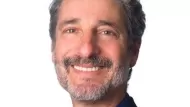A recent report by the libertarian Cato Institute, Does Rail Transit Save Energy or Reduce Greenhouse Gas Emissions?, claims that public transit service improvements are ineffective at conserving energy and reducing pollution emissions. But this conclusion is based on faulty analysis.
A recent report by the libertarian Cato Institute, Does Rail Transit Save Energy or Reduce Greenhouse Gas Emissions?, claims that public transit service improvements are ineffective at conserving energy and reducing pollution emissions. But this conclusion is based on faulty analysis.
Such analysis should compare modes under the same travel conditions. It is inappropriate to compare the fuel efficiency of public transit travel, most of which occurs under congested urban conditions, with average automobile travel efficiency, much of which occurs under uncongested conditions. Under congested urban conditions, public transit tends to be much more fuel efficient than driving.
Even more important, high quality transit service has a leverage effect by stimulating transit-oriented development, where people own fewer vehicles, drive significantly less, and consume less transportation fuel than occurs in more automobile-dependent communities. Studies indicate that each rail transit passenger-mile typically reduces 2-7 automobile vehicle-miles of travel.
In addition, efforts to reduce energy consumption by increasing automobile fuel efficiency, as the Cato report advocates, tend to provide less benefits than expected due to rebound effects: increased fuel efficiency makes driving more affordable, stimulating more annual vehicle miles. A 40% fuel efficiency increase typically stimulates about 10% more annual mileage by affected vehicles, offsetting a portion of energy savings and increasing urban traffic problems.
Transit service improvements provides many benefits (congestion reduction, parking cost savings, consumer savings, basic mobility for non-drivers, in addition to energy conservation and emission reductions), so its cost efficiency cannot be evaluated based on any single objective. When all impacts are considered, public transit improvements often turn out to provide high returns on investment, much higher than what is currently experienced by highway investments.
Public transit energy efficiency can be increased with supportive policies such as transit priority systems, commuter financial incentives and parking management. Described differently, part of the reason that North Americans consume far more transportation energy per capita than consumers in most other developed regions is because our current transportation and land use markets are distorted in various ways that stimulate inefficient automobile travel – correcting these distortions tends to increase economic and energy efficiency, in part by shifting travel from automobile to public transit.
For more information see:
Linda Bailey (2007), Public Transportation and Petroleum Savings in the U.S.: Reducing Dependence on Oil, ICF International for the American Public Transportation Association.
Todd Davis and Monica Hale (2007), Public Transportation's Contribution to Greenhouse Gas Reduction, American Public Transportation Association.
Reid Ewing, et al. (2007), Growing Cooler: The Evidence on Urban Development and Climate Change, Urban Land Institute and Smart Growth America.
ICF International (2008), The Broader Connection between Public Transportation, Energy Conservation and Greenhouse Gas Reduction, American Public Transportation Association.
Todd Litman (2005), Efficient Vehicles Versus Efficient Transportation: Comparing Transportation Energy Conservation Strategies, Transport Policy, Volume 12, Issue 2, March 2005, Pages 121-129.
Todd Litman (2006), Evaluating Rail Transit Criticism, Victoria Transport Policy Institute.
Todd Litman (2007), Evaluating Public Transit Benefits and Costs, Victoria Transport Policy Institute.
TRB (2004), TravelMatters: Mitigating Climate Change with Sustainable Surface Transportation, Transit Cooperative Research Program, Transportation Research Board.
VTPI (2008), Online TDM Encyclopedia, Victoria Transport Policy Institute.

Planetizen Federal Action Tracker
A weekly monitor of how Trump’s orders and actions are impacting planners and planning in America.

Maui's Vacation Rental Debate Turns Ugly
Verbal attacks, misinformation campaigns and fistfights plague a high-stakes debate to convert thousands of vacation rentals into long-term housing.

San Francisco Suspends Traffic Calming Amidst Record Deaths
Citing “a challenging fiscal landscape,” the city will cease the program on the heels of 42 traffic deaths, including 24 pedestrians.

Amtrak Rolls Out New Orleans to Alabama “Mardi Gras” Train
The new service will operate morning and evening departures between Mobile and New Orleans.

The Subversive Car-Free Guide to Trump's Great American Road Trip
Car-free ways to access Chicagoland’s best tourist attractions.

San Antonio and Austin are Fusing Into one Massive Megaregion
The region spanning the two central Texas cities is growing fast, posing challenges for local infrastructure and water supplies.
Urban Design for Planners 1: Software Tools
This six-course series explores essential urban design concepts using open source software and equips planners with the tools they need to participate fully in the urban design process.
Planning for Universal Design
Learn the tools for implementing Universal Design in planning regulations.
Heyer Gruel & Associates PA
JM Goldson LLC
Custer County Colorado
City of Camden Redevelopment Agency
City of Astoria
Transportation Research & Education Center (TREC) at Portland State University
Jefferson Parish Government
Camden Redevelopment Agency
City of Claremont




























